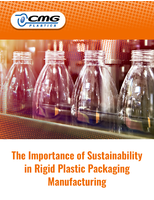Vaporizer produces controllable flow of vapor.
Share:
Press Release Summary:
Capillary Force Vaporizer combines capillary force and phase transition to generate powerful jet of pressurized vapor from unpressurized liquid, with no moving parts. When used with consumer products such as fragrances or insect repellant, CFV can disperse active ingredients directly, eliminating need for propellants, fillers, and disposable aerosol cans. When used with liquid fuels, vapor produced by CFV burns like natural gas.
Original Press Release:
New Liquid Vaporizing Technology by Vapore Breaks Traditional Design Boundaries
Evaluation Kits Available for Application Engineers for Cross-Category Applications Richmond, Calif., May 26, 2004 - Controlled vaporization of liquids is central to a huge array of products and processes, from air fresheners to microchip manufacturing to jet engines. Now, engineers and product designers have a new way to accomplish this fundamental function. Today Vapore announced the availability of its Capillary Force Vaporizer (CFV), a compact, heat-powered device that generates a powerful jet of pressurized vapor from un-pressurized liquid, with no moving parts. Vapore's CFV combines two basic natural phenomena, capillary force and phase transition, into a single component that produces a controllable flow of vapor, without resorting to the mechanism and complication that is normally required. It's a radical design breakthrough that's generating interest for a diverse range of applications. Traditional methods of vapor generation are as diverse as the applications they embrace, but most involve atomization, or the creation of tiny droplets, which in turn evaporate to become vapor or gas. In contrast, the CFV eliminates most of the mechanism and is remarkably compact and efficient. But the CFV is much more than a clever design alternative. For example, used with consumer products like fragrances or insect repellant, a CFV can disperse active ingredients directly, eliminating the need for propellants, fillers and disposable aerosol cans. When used with liquid fuels, the vapor produced by a CFV burns more like natural gas, enabling greatly simplified designs and the potential for significant emissions reductions. A diagram of Vapore's patented CFV process is at: vapore.com/tech_howto.htm "Our goal with the introduction of the CFV technology is to continue to attract partners, designers and engineers over the entire spectrum of industries that can benefit from our technology platform," said Rob Lerner, CEO and co-founder of Vapore. "Vapore offers a completely new angle for those involved with vaporization applications, and we're encouraged by the reception from existing as well as more recent partners and customers." Vapore evaluation kits: Evaluation kits are currently available for application engineers and designers to integrate Vapore's CFV component into prototypes. The evaluation kit enables the user to activate the CFV with a small electric heater while monitoring crucial performance parameters of power (heat), temperature and flow rate. Components include a sensitive flow meter, power supply, software and a microcomputer. Vapore provides customer development teams with technical assistance to bring designs from ideation to production. Evaluation kit specification sheets are available online. Backed by six U.S. patent grants and innumerable U.S. and foreign patent filings, CFVs are currently being manufactured and integrated into prototype designs at Vapore¹s San Francisco Bay Area facilities. The first commercial application using Vapore¹s technology is scheduled for release summer 2004. About Vapore Founded in 2001, Vapore, Inc. is the creator of a new method of liquid vaporization-the Capillary Flow Vaporizer (CFV). Vapore has proven prototype production and is actively engaged with OEM customers in developing first-generation CFV-based products. For more information please visit www.vapore.com




